-
WH finalizing executive order tightening background checks of gun buyers

Sources say that the White House is about to announce a new executive order to expand background checks of individuals wishing to purchase guns. One proposal being considered would designate more sellers as high-volume dealers, closing a legal loophole which allows many sales conducted online or at gun shows to escape existing background check provisions. Two other developments on the gun front: On Thursday, Connecticut governor Dan Malloy said he would sign an executive order which would bar people on the government’s terrorism watch lists from buying guns in Connecticut; in the House, Democrats demand that a 17-year ban on government-funded research into violence involving firearms be ended.
-
-
New lie-detecting software uses real court case data
By studying videos from high-stakes court cases, University of Michigan researchers are building unique lie-detecting software based on real-world data. Their prototype considers both the speaker’s words and gestures, and unlike a polygraph, it does not need to touch the subject in order to work. In experiments, it was up to 75 percent accurate in identifying who was being deceptive (as defined by trial outcomes), compared with humans’ scores of just more than 50 percent.
-
-
Human skin detection technology improves security, search and rescue
Color-image based systems are excellent at locating people in aerial search and rescue operations, but fall short when it comes to discerning between actual human skin and objects with similar hues. To remedy this, researchers have developed a novel two-dimensional feature space which uses the spectral absorption characteristics of melanin, hemoglobin and water to better characterize human skin.
-
-
U.K. arrests record number of terrorism suspects, especially women, teenagers
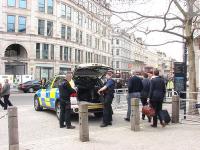
According to the U.K. Home Office quarterly bulletin, 315 terror suspects – a record — have been arrested in the United Kingdom in the past year, with a sharp increases in arrests of women and teenagers. Therise in the number of terrorism-related suspects arrested is a reflection of the determined effort by the police and security services to address the ISIS threat and stem the flow of Britons to, and from, Syria.
-
-
Matching bullets to wounds using organ-specific protein signatures found on projectiles
Forensic medicine has long employed molecular biology to link, for instance, tiny amounts of organic material to a suspect. Yet, such methods are less useful when it comes to finding out which shot or stab wound was the cause of death. They enable a weapon to be linked to the victim, but not the projectile to the wound. Researchers have developed a method which enables them more accurately to reconstruct crimes involving sharp blades or firearms.
-
-
Fibers from natural fats make bulletproof vests stronger and greener
Bulletproof vests and other super-strong materials could soon become even tougher and more environmentally friendly at the same time with the help of extra firm, or “al dente,” fibers. These materials, which are powerful enough to stop speeding bullets, can also be used for many other tasks that require strength.
-
-
Civil liberties coalition condemns cybersecurity bill
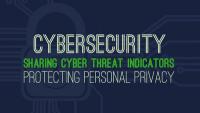
Civil libertarians in the United States have a new ally in the fight against the new surveillance bill now being considered in Congress: librarians. The critics of the bill call it both “unhelpful” and “dangerous to Americans’ civil liberties.” House speaker Paul Ryan (R-Wisconsin) has been actively pushing for reconciliation of two bills, the Protecting Cyber Networks Act (PCNA) and the National Cybersecurity Protection Advancement with the Cybersecurity Information Sharing Act of 2015 (CISA), which passed a Senate vote in October.
-
-
Paris attacks expose weaknesses in Europe’s security structure

The 13 November attacks in Paris offered a painful demonstration of Europe’s security loopholes which the terrorists exploited to their advantage. The attacks should serve as a wake-up call to Europeans that the continental security structure, built in another era, is no longer sufficient and needs to be adapted to new circumstances. Whether or not such adaptations can be made, and made in time before the terrorists decide to launch another attack, is an open question.
-
-
Improving police responses to mass shootings
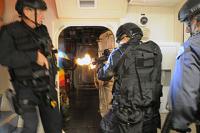
Before Columbine, law enforcement acted on the assumption that mass casualty incidents would involve a barricaded lone shooter who could be isolated, or a hostage situation in which the attackers would engage in negotiation before they killed more people. Thus, protocols established after the 1966 sniper attack at the University of Texas, called for first responders in the United States to set up a perimeter around the site of the shooting, gather as much information as possible, and then wait for specially trained assault teams, hostage negotiators, medics, and other specialists to arrive. “The assumption,” one expert said, “was that time was on their side.” Police forces arriving on the scene of a shooting no longer entertain this assumption.
-
-
It’s time to repeal the gun industry’s exceptional legal immunity

Coming up with effective and realistic solutions to curb gun violence is not easy. Guns pose a tricky dilemma, because they can be used to do good or bad things. They can be used to commit heinous crimes, but they can be used to protect lives as well. The challenge for lawmakers is to come up with ways to reduce the risk of criminal misuse of guns while preserving and even promoting the likelihood of guns being used in beneficial ways. Ensuring that every firearm manufacturer and dealer operates as safely and responsibly as possible should be one piece of the puzzle. A key way to ensure that gun companies have the right incentives would be to repeal the Protection of Lawful Commerce in Arms Act. Enacted in 2005, this federal law gave gun sellers a special immunity from legal responsibilities, which is not enjoyed by any other industry. Gun manufacturers and dealers should not be subject to any extraordinary forms of liability that do not apply to other products. They should not be liable, for example, merely because a firearm is a weapon that is capable of being used to do harm. But if a gun manufacturer or dealer fails to take basic, reasonable precautions in distributing products, it should be held accountable under the law just as an irresponsible company in any other business would be. With the risks of firearms in the wrong hands becoming ever more apparent, Congress should reconsider its regrettable decision to give the gun industry special immunity from legal responsibility.
-
-
Unmanned Maritime Systems 2015 conference: “Reliability, Economy, Endurance”
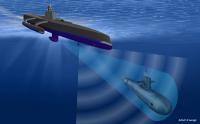
The theme of the Unmanned Maritime Systems 2015 conference, being held 7-9 December 2015 in Arlington, Virginia, is “Reliability, Economy, Endurance: Requirements for Next-Generation Unmanned Surface and Undersea Systems.” The organizers note that there is a growing demand for Unmanned Maritime Systems (UMS) as today’s geopolitical environment poses a number of unique security challenges in the maritime domain. Advances in power, robotics, computing, sensors, and navigation technologies drive a growing DoD demand for unmanned systems that can provide increased autonomy, persistent resilience, and functionality with decreased risk and expense, showing their value across multiple applications, including otherwise dull, dirty, or dangerous missions.
-
-
A woman’s involvement makes San Bernardino shooting rare among mass shootings
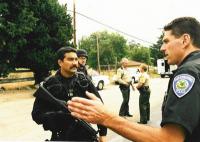
The shooting in San Bernardino, California marked the 355th mass shooting in the United States in fewer than as many days in 2015. As details emerge regarding the events, it is clear that these types of crimes are morphing and not abating. “Shootings involving mission-oriented females may be a new threshold which should be concerning to all of us, and the incident in San Bernardino might just be a hybrid, and a harbinger, of shootings to come,” says an expert.
-
-
Tashfeen Malik pledged allegiance to ISIS

Tashfeen Malik, one of the two attackers who killed fourteen people in a San Bernardino social service center, used her smartphone to post a pledged allegiance on her Facebook page to Abu Bakr al-Baghdadi, ISIS leader – and officials say that timeline of the attack shows that she posted her message while driving with her husband, Syed Rizwan Farook, in the black SUV in the moments after the attack. The two were killed in a shootout with the police about two hours later.
-
-
DHS, NYPD train on response to active shooters
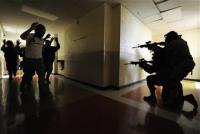
After months of coordination between the Department of Homeland Security (DHS) Science and Technology Directorate (S&T) and the New York Police Department (NYPD) Counter Terrorism Division, the NYPD conducted an active shooter training exercise on 22 November. S&T says that the exercise not only tested their training and proficiency, but also allowed them to incorporate several commercial technologies that could benefit future emergency situations.
-
-
Effective policing depends on public trust: Report
Public trust and confidence in the police have remained flat for several decades despite a declining crime rate in the United States, a problem that has become especially salient in the wake of recent police shootings of unarmed black men. A new report shows that policing practices focused on respectful treatment and transparent decision making are likely to be more effective than traditional punishment-based strategies in building public trust and encouraging cooperation with the police.
-
More headlines
The long view
Factories First: Winning the Drone War Before It Starts
Wars are won by factories before they are won on the battlefield,Martin C. Feldmann writes, noting that the United States lacks the manufacturing depth for the coming drone age. Rectifying this situation “will take far more than procurement tweaks,” Feldmann writes. “It demands a national-level, wartime-scale industrial mobilization.”
How Male Grievance Fuels Radicalization and Extremist Violence
Social extremism is evolving in reach and form. While traditional racial supremacy ideologies remain, contemporary movements are now often fueled by something more personal and emotionally resonant: male grievance.
The Surprising Reasons Floods and Other Disasters Are Deadlier at Night
It’s not just that it’s dark and people are asleep. Urban sprawl, confirmation bias, and other factors can play a role.
Why Flash Flood Warnings Will Continue to Go Unheeded
Experts say local education and community support are key to conveying risk.
